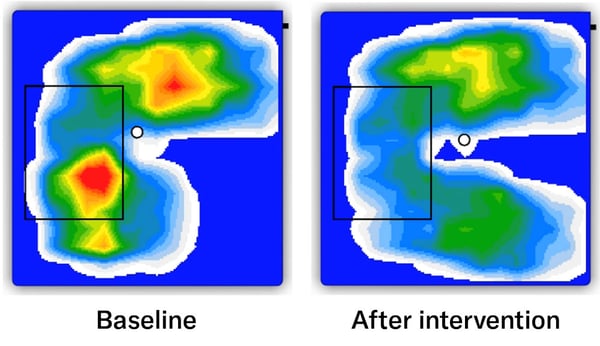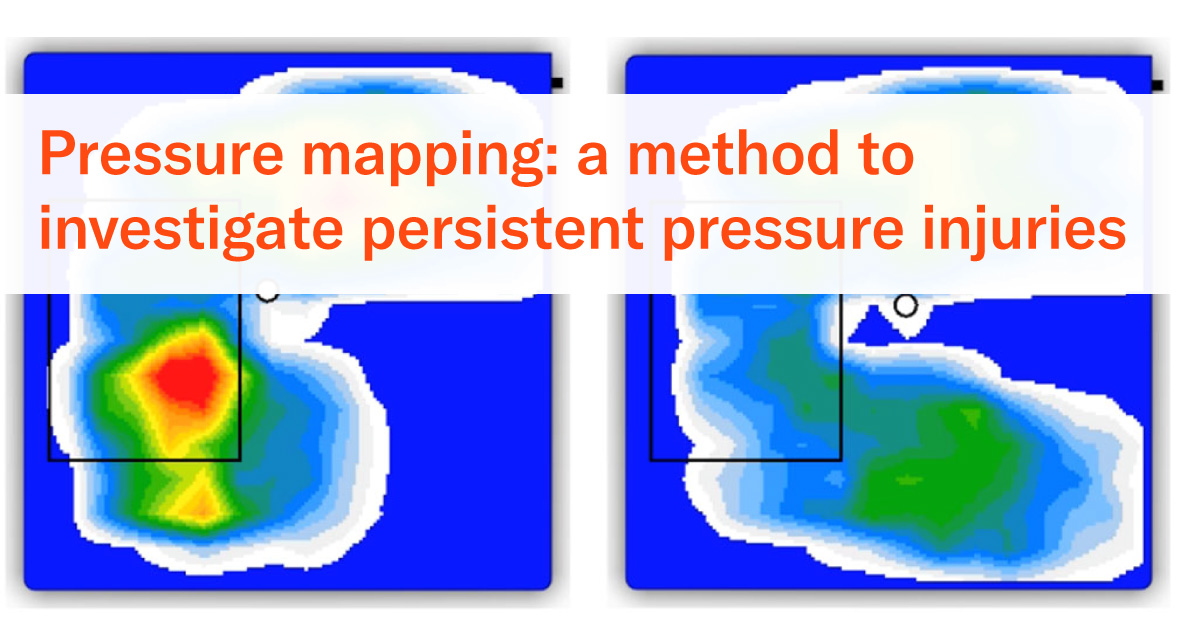This is part 2 of a series focusing on pressure mapping and pressure mapping systems. See part 1, part 2, part 3, part 4, and part 5.
Have you ever treated that nagging pressure injury that just won’t heal? Often, despite the medical team performing all the right bedside treatment, the wound just doesn't get better. There could be a positioning reason (both in bed and from the seated posture), that may impede the healing process.
We as therapists, can use a pressure mapping system to investigate the “why”?
When a pressure mapping system is used during wheelchair assessment, it provides objective data regarding how pressure is interacting with the body in the seated posture. This data is critical to consider as a potential factor affecting the risk for pressure injuries or the healing process of a current wound. It provides a snapshot in time of the wheelchair configuration and/or equipment choices and allows the team to compare various scenarios when exploring what may or may not be impeding the healing of an existing pressure injury.
Start with a baseline pressure mapping, assessing the wheelchair configuration the consumer is currently using in order to get a clear picture of the starting point. This data reflects how the current wheelchair system is distributing pressure throughout the support surfaces. Remember: Pressure mapping is intended to be a comparative tool!

After you have the starting point through a baseline mapping, make one change at time and assess how that particular intervention impacts pressure redistribution. Are the new, support surfaces or the new wheelchair configurations, distributing pressure away from that wound site to allow it to heal better than the baseline?
In the example below: in a manual K0003 wheelchair often seen in nursing homes and hospital systems, elevating leg rests, decrease femoral contact and place a lot of pressure on the right ischial tuberosity (IT) where the client has a wound.
After the intervention of changing the elevating leg rests for a standard leg rest, the therapist was able to provide better contact under both femurs thus distribute pressure more evenly, away from the right IT, and across more tolerant tissues, giving that pressure injury under the right IT a chance to heal. And by taking a baseline image and an after-intervention image, we are able to prove that!

To name a few other variables that we can assess:
- the relationship between opening or closing seat-to-back angle on pressure redistribution
- the impact of the position of the leg rests on pressure redistribution
- compare the effect of using a straight sling back in comparison to a contoured back support that can create stability and even pressure distribution along the trunk
- map different chair functions such as tilt alone, tilt and reline or standing and to assess the best pressure relief technique for that client in hopes of giving the wound a chance to heal
- map different styles of cushions and back supports for best pressure redistribution

Having the ability to make changes to the wheelchair system then carefully track the impact of those changes through pressure mapping allows the therapist to identify the root cause/s then select the most appropriate interventions based on the information gathered. This type of "detective work" approach is what is required when trying to solve complex pressure injury cases.
Trial various cushions, back supports & configurations to see how each maps to find the best intervention.


 Ana Endsjo, MOTR/L, CLT
Ana Endsjo, MOTR/L, CLT
National Education Manager - Long Term Care Division
Ana Endsjo has worked as an occupational therapist since 2001 in a variety of treatment settings. She has mainly worked with the geriatric population, dedicated to the betterment of the treatment of the elderly in long term care centers. Her focus has been on seating and positioning and contracture management of the nursing home resident. With this experience, her hope is to guide other therapists, rehab directors, nurses, and administrators through educational guides, blogs, webinars, and live courses in her role as National Education Manager - Long Term
